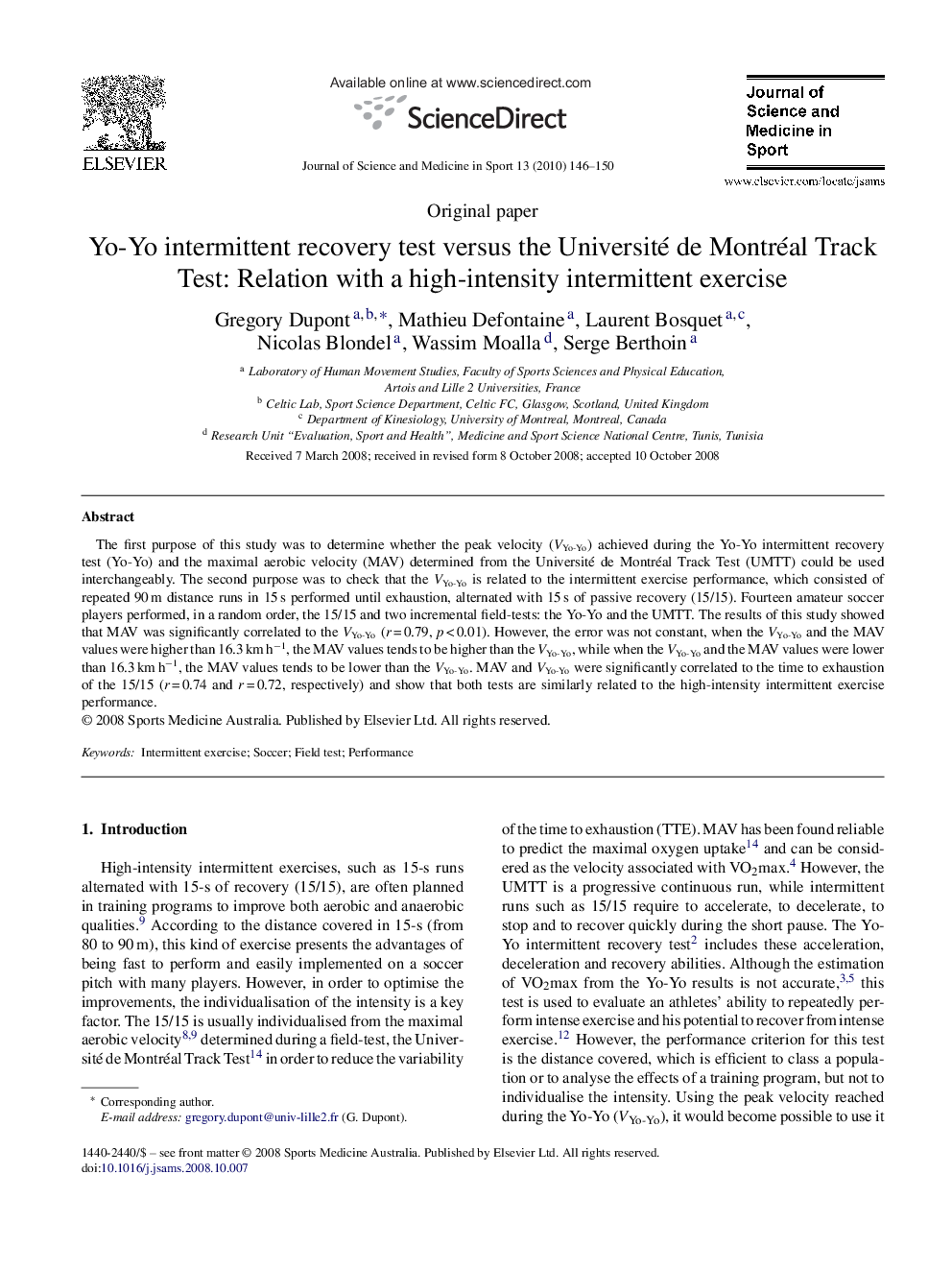| کد مقاله | کد نشریه | سال انتشار | مقاله انگلیسی | نسخه تمام متن |
|---|---|---|---|---|
| 2704851 | 1144704 | 2010 | 5 صفحه PDF | دانلود رایگان |

The first purpose of this study was to determine whether the peak velocity (VYo-Yo) achieved during the Yo-Yo intermittent recovery test (Yo-Yo) and the maximal aerobic velocity (MAV) determined from the Université de Montréal Track Test (UMTT) could be used interchangeably. The second purpose was to check that the VYo-Yo is related to the intermittent exercise performance, which consisted of repeated 90 m distance runs in 15 s performed until exhaustion, alternated with 15 s of passive recovery (15/15). Fourteen amateur soccer players performed, in a random order, the 15/15 and two incremental field-tests: the Yo-Yo and the UMTT. The results of this study showed that MAV was significantly correlated to the VYo-Yo (r = 0.79, p < 0.01). However, the error was not constant, when the VYo-Yo and the MAV values were higher than 16.3 km h−1, the MAV values tends to be higher than the VYo-Yo, while when the VYo-Yo and the MAV values were lower than 16.3 km h−1, the MAV values tends to be lower than the VYo-Yo. MAV and VYo-Yo were significantly correlated to the time to exhaustion of the 15/15 (r = 0.74 and r = 0.72, respectively) and show that both tests are similarly related to the high-intensity intermittent exercise performance.
Journal: Journal of Science and Medicine in Sport - Volume 13, Issue 1, January 2010, Pages 146–150